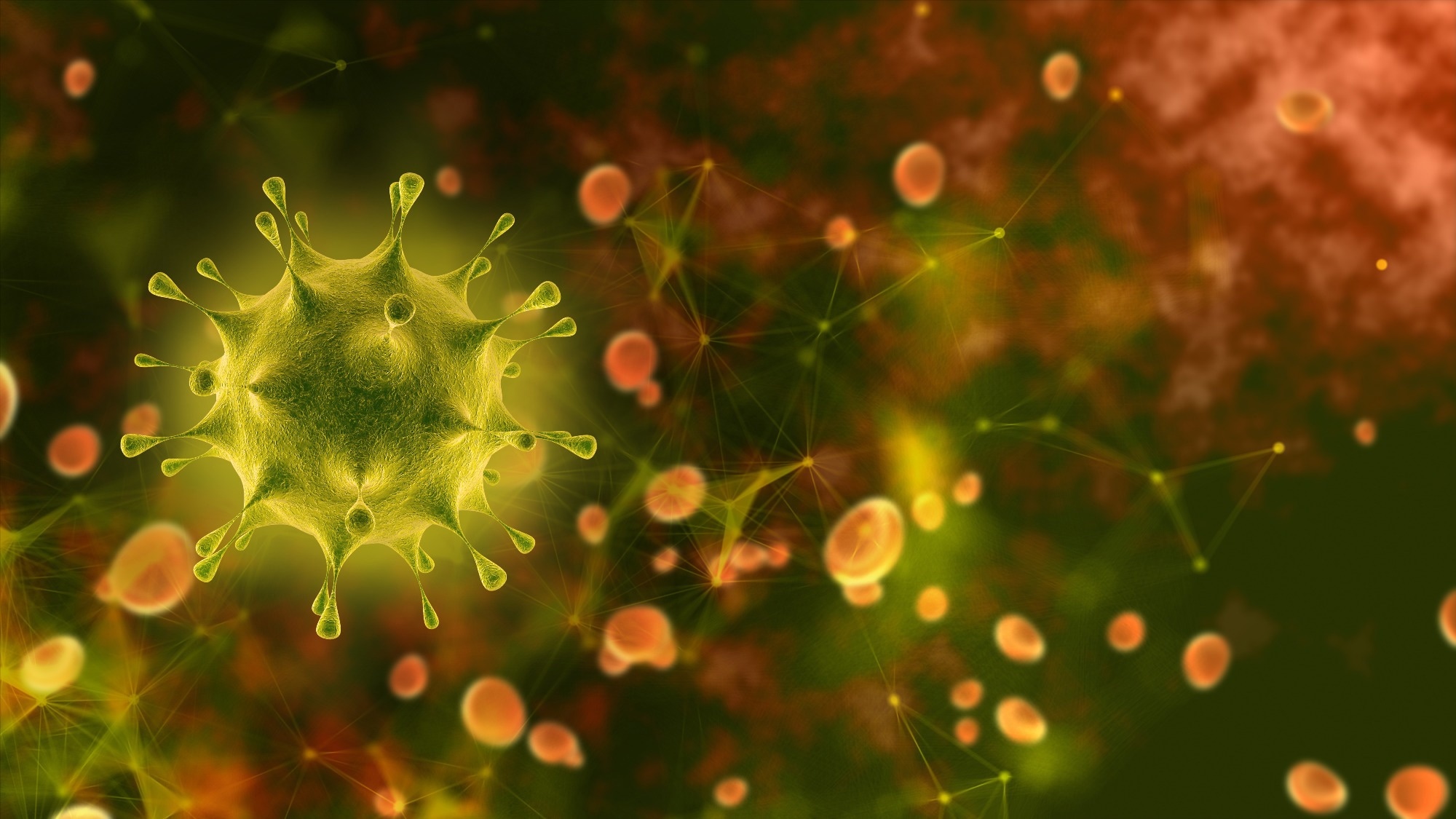Mosaic RBD nanoparticles offer 100% protection against SARS-CoV-2 in animal model

The repeated zoonotic spillovers of α- and β-coronaviruses (CoV) have significantly increased morbidity and mortality worldwide. The severe acute respiratory syndrome coronavirus-2 (SARS-CoV-2) spillover is likely from a bat or a pangolin. This highly infectious virus has resulted in the coronavirus disease 2019 (COVID-19) pandemic, claiming more than 6.64 million lives worldwide.
 Study: Mosaic RBD nanoparticles induce intergenus cross-reactive antibodies and protect against SARS-CoV-2 challenge. Image Credit: thinkhubstudio / Shutterstock
Study: Mosaic RBD nanoparticles induce intergenus cross-reactive antibodies and protect against SARS-CoV-2 challenge. Image Credit: thinkhubstudio / Shutterstock
Background
SARS-CoV-2 contains the spike (S) protein, which comprises two subunits, namely, S1 and S2. The S1 subunit binds with the host's angiotensin-converting enzyme 2 (ACE2) receptor, while the S2 subunit promotes membrane fusion to establish viral infection. Hence, the S protein is the main target of neutralizing antibodies (nAbs).
The S1 subunit contains a receptor-binding domain (RBD) and an N-terminal domain (NTD), and two S1 subdomains (SD1 and SD2). The RBD domain is responsible for over 90% of neutralizing activity, elucidated from studying COVID-19 convalescent patients and vaccinated individuals. Interestingly, RBD monomer, dimer, and trimer were observed to trigger potent Ab responses. In addition, self-assembling multivalent RBD nanoparticles exhibited induction of significant immune responses.
The outbreaks of SARS-CoV-2 variants have been driven by waning immunity, immune evasion, and increased infectiousness. Some of the variants, such as the Delta and Omicron strains, are less vulnerable to the RBD-directed antibodies. However, after the administration of the third dose of the COVID-19 vaccine, lower rates of infection and severe illness were recorded.
Immunological imprinting against strain-specific antigens could cause overspecialization of immunodominant B cells with limited breadth. However, heterologous RBDs on nanoparticles were more advantageous than cross-reactive B cells, particularly for inducing broader Ab responses. Nevertheless, a key drawback of mosaic nanoparticle platforms has been their dependence on stochastic assembly, where they use a mixture of antigen-fused tags to assemble mosaic nanoparticles. It is exceptionally challenging to co-display heterologous RBDs in mass production, as a uniform distribution of antigens on nanoparticles is difficult.
A New Study
A recent PNAS journal study has sought to address the above-stated drawback and developed a new strategy that involves a self-assembling scaffold of proliferating cell nuclear antigen (PCNA). This technique can develop nanoparticles containing evenly incorporated heterotypic antigens.
Omics eBook

PCNA is a protein that infolds DNA as a processivity factor. A hyperthermophilic archaea, namely, Saccharolobus solfataricus, possesses a heterotrimeric PCNA, which was selected as a scaffold with three subunits (PCNA1, PCNA2, and PCNA3).
Despite their low sequence similarity, PCNA subunits have a similar structure, contain around 250 amino acids, and are arranged in a sequential manner. PCNA1 and PCNA2 combine and recruit PCNA3 to form a heterotrimer whose dissociation constants are between micromolar and nanomolar ranges.
The current study selected six RBD-SD1s derived from α- and β- coronaviruses associated with zoonotic infection. These heterologous RBD-SD1s were fused at the termini of PCNA1, PCNA2, and PCNA3, which self-assemble in a precise order to form 6RBD-np. Characterization of 6RBD-np revealed a ring-shaped disk structure with six protruding RBD-SD1s. The nanoparticle's structure resembled jewels in a crown of around 40 nm.
The β-CoVs, hCoV HKU1, SARS-CoV, SARS-CoV-2, and MERS-CoV, share a five-stranded antiparallel β-sheet and extended loops of receptor-binding motifs, while the α-CoVs, hCoVs 229E and NL63 share a β-sandwich of three-stranded β-sheets. When superimposed, the six RBD structures share a central β-sheet with different arrangements of extended loops.
Study Findings
Based on antigenic characterization, six heterologous antigens were found to be evenly distributed on 6RBD-np. This finding highlighted the advantages of using the PCNA subunits for developing mosaic multivalent antigens compared to previously used stochastic assembly platforms.
Notably, BALB/c mice administered with 6RBD-np exhibited elevated levels of Ab titers for each antigen in post-boost sera. The hACE2 transgenic mice, after booster vaccination with 6RBD-np, demonstrated a protected immune response against the wild-type (WT) SARS-CoV-2 and Delta challenges. Importantly, this treated group only exhibited 100% survival rates among the antigen group.
Pseudovirus-based and authentic virus-based neutralization assays indicated that 6RBD-np induced significantly high nAb titers, which had broad serum neutralization ability. In the challenged sera, both S-PCNA1 and 6RBD-np groups exhibited significant Ab titers against the RBDs derived from SARS-CoV and SARS-CoV-2.
Although the 6RBD-np group exhibited high Ab titers against the RBDs of hCoVs HKU1 and MERS, the S-2P and 6RBD-np groups demonstrated high titers against 229E and NL63. Since the high levels of Abs in the S-2P group against 229E and NL63 RBDs were only found in the WT challenge, they suitably indicate the importance of antigen size. This is because S-2P and 6RBD-np were among the largest-sized studied antigens.
Conclusions
The newly developed mosaic 6RBD-np possesses five β-CoV RBDs and an α-CoV RBD that induced potent Ab response in sera against the RBDs for not only α- and β-CoV but also hCoV NL63 RBD. Importantly, the 6RBD-np also exhibited significant potency against bat CoV RaTG13 and Omicron (BA.1) variant. The current study revealed that the 6RBD-np plays a crucial role in achieving a broad-spectrum immunity based on conformationally conserved epitopes.
- Lee, B. D. (2023) Mosaic RBD nanoparticles induce intergenus cross-reactive antibodies and protect against SARS-CoV-2 challenge. PNAS, 120(4). https://doi.org/10.1073/pnas.2208425120, https://www.pnas.org/doi/10.1073/pnas.2208425120
Posted in: Medical Science News | Medical Research News | Disease/Infection News
Tags: ACE2, Angiotensin, Angiotensin-Converting Enzyme 2, Animal Model, Antibodies, Antigen, Archaea, Cell, Coronavirus, Coronavirus Disease COVID-19, covid-19, DNA, Enzyme, Immune Response, immunity, Membrane, MERS-CoV, Mortality, Nanoparticle, Nanoparticles, Omicron, Pandemic, Protein, Pseudovirus, Receptor, Respiratory, SARS, SARS-CoV-2, Severe Acute Respiratory, Severe Acute Respiratory Syndrome, Syndrome, Transgenic, Vaccine, Virus

Written by
Dr. Priyom Bose
Priyom holds a Ph.D. in Plant Biology and Biotechnology from the University of Madras, India. She is an active researcher and an experienced science writer. Priyom has also co-authored several original research articles that have been published in reputed peer-reviewed journals. She is also an avid reader and an amateur photographer.
Source: Read Full Article